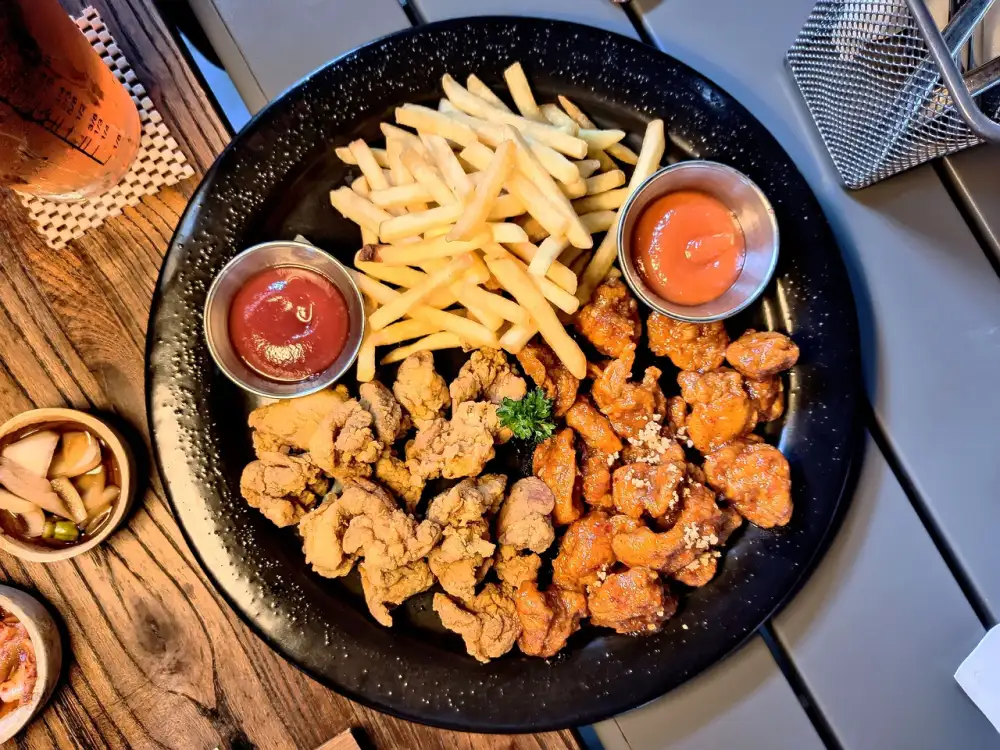Spice up Your Dishes with Gochujang Sauce: A Korean Culinary Staple

Gochujang sauce is a staple in Korean cuisine, renowned for its rich umami flavor and spicy kick. This fermented chili paste has been a fundamental ingredient in Korean cooking for centuries, adding depth and complexity to dishes. Its popularity has spread beyond Korea, gaining recognition worldwide for its unique taste profile. Gochujang is made from red chili peppers, glutinous rice, fermented soybeans, and salt, creating a versatile condiment that can elevate the flavor of various recipes.
Origins and Traditional Use in Korean Cuisine
Gochujang sauce, a staple in Korean cuisine, has a rich history dating back to the 18th century. It originated in the southern regions of Korea and was traditionally made by fermenting soybeans, red chili powder, glutinous rice, and salt. This fermentation process gives gochujang its unique umami flavor and spicy kick. In Korean cooking, gochujang is used as a key ingredient in various dishes such as bibimbap, tteokbokki, and bulgogi. Its versatility allows it to be used as a marinade, dipping sauce, or seasoning agent in soups and stews.
Key Ingredients and Flavor Profile
Gochujang sauce is a staple in Korean cuisine, known for its bold and complex flavors. The key ingredients in gochujang include fermented soybeans, glutinous rice powder, red chili powder, and salt. This combination creates a rich umami taste with a spicy kick. The fermentation process not only enhances the depth of flavor but also contributes to its unique aroma. Gochujang sauce strikes a perfect balance between sweet, savory, and spicy notes, making it a versatile condiment that can elevate any dish with its robust flavor profile.
Health Benefits and Nutritional Value
Gochujang sauce offers more than just flavor; it also boasts several health benefits. This Korean staple is rich in vitamins, particularly vitamin C, which supports the immune system and promotes healthy skin. Additionally, gochujang contains capsaicin from red chili peppers, known for its anti-inflammatory properties and potential to boost metabolism. The fermentation process used in making gochujang enhances its probiotic content, beneficial for gut health. With minimal fat and calories, this spicy condiment can be a nutritious addition to your dishes.
Versatile Ways to Incorporate Gochujang Sauce in Cooking
1. **Marinades:** Use gochujang sauce as a base for marinades for meats, tofu, or vegetables. Its rich flavor adds depth and spice to your dishes.
2. **Stir-fries:** Add a spoonful of gochujang sauce to stir-fries for at the end of cooking for a burst of heat and umami.
3. **Dressings and Sauces:** Mix gochujang with ingredients like soy sauce, sesame oil, and rice vinegar to create delicious dressings for salads or dipping sauces for dumplings.
4. **Soups and Stews:** Enhance the flavor of soups and stews by stirring in some gochujang sauce during cooking. It can add complexity and warmth to the dish.
5. **Grilling:** Brush gochujang sauce onto grilled meats or vegetables for a spicy kick and caramelized finish.
6. **Noodles and Rice Dishes:** Toss cooked noodles or rice with gochujang sauce for a quick and flavorful meal option.
By incorporating gochujang sauce into your cooking repertoire, you can elevate the taste of various dishes with its unique blend of sweet, savory, and spicy flavors.
Popular Recipes Featuring Gochujang Sauce
1. **Gochujang Chicken:** Marinate chicken thighs in a mixture of gochujang, soy sauce, honey, garlic, and ginger before grilling or baking for a flavorful and spicy dish.
2. **Bibimbap:** A traditional Korean mixed rice dish that includes vegetables, protein (such as beef or tofu), and a dollop of gochujang sauce for added heat and depth of flavor.
3. **Tteokbokki:** A popular Korean street food made with chewy rice cakes cooked in a spicy-sweet gochujang-based sauce along with fish cakes and boiled eggs.
4. **Gochujang Glazed Brussels Sprouts:** Roast Brussels sprouts in the oven until crispy, then toss them in a glaze made from gochujang, maple syrup, and soy sauce for a unique twist on a classic side dish.
5. **Spicy Gochujang Ramen:** Upgrade your instant ramen by adding gochujang to the broth along with vegetables, protein, and a soft-boiled egg for a quick and satisfying meal with an extra kick.
These recipes showcase the versatility of gochujang sauce in both traditional Korean dishes and modern fusion cuisine, adding depth of flavor and spice to elevate any meal.
Tips for Storing and Preserving Gochujang Sauce
When storing Gochujang sauce, it is essential to keep it in an airtight container in the refrigerator. This helps maintain its freshness and prevents contamination. Additionally, storing the sauce away from direct sunlight and heat sources will help preserve its flavor and quality. It is recommended to use a clean utensil each time you scoop out the sauce to prevent any cross-contamination. Gochujang sauce has a long shelf life when stored properly, typically lasting for several months in the refrigerator.
In conclusion, Gochujang sauce is a versatile and flavorful Korean condiment that can elevate the taste of any dish. Its rich history, unique ingredients, and health benefits make it a must-have in any kitchen. Whether you're looking to add a spicy kick to your stir-fries, marinades, soups, or even desserts, Gochujang sauce is sure to impress with its bold and complex flavors. So next time you're looking to spice up your cooking, reach for a bottle of Gochujang sauce and savor the delicious depths it adds to your culinary creations.
Published: 21. 04. 2024
Category: Recipes



